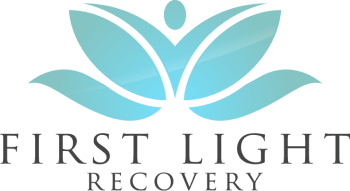Residential Mental Health Treatment Services
Recognizing Your Need for Help
Deciding to seek help for mental health issues can be daunting. Recognizing that you or a loved one might benefit from professional support is the first crucial step in the healing journey. Residential PTSD rehab in Santa Ana provides a safe and supportive environment for individuals struggling with post-traumatic stress disorder and related mental health challenges. These centers offer 24/7 support, which is essential for preventing potential crises and helping clients stabilize emotionally.
At residential treatment centers, individuals have access to specialized therapies such as cognitive processing therapy (CPT) and eye movement desensitization and reprocessing (EMDR). These evidence-based treatments have proven effective in addressing PTSD symptoms and can significantly enhance the recovery process. For more information on the types of support available, you can learn more about our residential mental health services for trauma in Anaheim.
Understanding Residential Programs
Residential programs provide comprehensive treatment designed to address a wide range of psychological issues, including PTSD. These programs typically follow a structured process that begins with admission and evaluation to assess individual needs. Once in the program, clients may go through detoxification with medical intervention if necessary, followed by engaging in various experiential therapies, complementary and alternative medicine (CAM) treatments, and group activities.
Residential treatment distinguishes itself from outpatient programs by offering a higher level of intensive care. While outpatient programs may include access to counseling and psychiatric support, they do not provide the constant supervision and immersive environment that residential programs do. This makes residential treatment particularly beneficial for those needing more support to manage their symptoms.
Understanding the different options available allows you to make informed decisions regarding your care or that of your loved one. For more detailed comparisons, explore our sections on inpatient trauma care in Orange County or our residential PTSD program in Orange County to find the best fit for your needs.
Choosing the Right Facility
Selecting the appropriate facility for residential PTSD rehab is crucial for effective treatment and recovery. Considerations such as location, accessibility, and the specific treatment approaches offered can significantly impact your or your loved one’s journey toward healing.
Location and Accessibility
The location of the treatment facility plays a vital role in accessibility and convenience for patients and their families. One notable option is Miramar Health, located at 1501 South Minter Street, Santa Ana, CA 92707. This facility is well-situated within the community, making it easier for family visits and local support connections. Miramar Health also features an additional location at 23293 South Pointe Drive, Laguna Hills, CA 92653, enhancing accessibility for a broader range of clients.
| Facility Name | Address | Accessibility |
|---|---|---|
| Miramar Health | 1501 South Minter Street, Santa Ana, CA | Convenient for local support |
| 23293 South Pointe Drive, Laguna Hills, CA | Additional location available |
Treatment Approaches
The treatment approaches employed by the facility can greatly influence recovery outcomes. Inpatient programs typically integrate a series of systematic steps including admission, evaluation, detox with medical intervention, experiential therapies, and group activities. These methods aim to help individuals gradually reengage with the outside world following their treatment [1].
When considering the right program, it’s essential to look for comprehensive treatment modalities that address both mental health and co-occurring issues. Effective options might include integrated therapies that combine traditional therapeutic practices with complementary and alternative medicine (CAM) treatments to provide a holistic approach to healing.
For more insights on specialized treatments, you may explore resources like our residential mental health for trauma anaheim and residential ptsd program orange county. Ensuring that the facility offers a treatment approach suited for your specific needs will contribute positively to the recovery process.
Benefits of Residential Treatment
Choosing residential PTSD rehab Santa Ana can provide several significant benefits for individuals experiencing trauma and PTSD. Two of the most notable advantages include around-the-clock support and care, as well as specialized therapeutic interventions tailored to your specific needs.
24/7 Support and Care
One of the primary benefits of residential treatment is the availability of continuous support. Trauma residential treatment centers offer a safe and supportive environment where you can work through your experiences with the help of trained professionals. This level of constant support is essential for preventing potential crises and ensuring that you have access to help whenever you need it.
The structured schedules at these facilities promote a consistent routine, helping you stay on track with treatment goals while managing symptoms effectively. Daily routines are designed to include various self-care activities such as exercise, relaxation techniques, and mindfulness practices, which can greatly enhance your overall well-being.
Having 24/7 support means you are never alone in your journey toward recovery. Staff is readily available to assist you, providing guidance and encouragement during both challenging moments and times of progress.
Specialized Therapeutic Interventions
Residential treatment programs offer specialized therapeutic interventions that are evidence-based and effective in treating PTSD. Clients may have access to therapies such as Cognitive Processing Therapy (CPT) and Eye Movement Desensitization and Reprocessing (EMDR), which are specifically designed to help individuals process traumatic experiences and develop coping skills to manage their symptoms [2].
Additionally, individual therapy sessions, group therapy, and other supportive therapies tailored to your unique needs are typically part of the treatment plan. These interventions focus on promoting recovery through comprehensive strategies, addressing not only the symptoms of PTSD but also the underlying trauma.
Incorporating these specialized treatments within a structured environment ensures you are equipped with the necessary tools to navigate everyday challenges even after leaving the residential program. This foundation sets the stage for a successful transition back to daily life and may align closely with your long-term recovery goals.
By choosing First Light Recovery or another facility for residential treatment, you are taking a significant step towards finding lasting support and effective treatment options for your mental health needs. Explore resources like depression and anxiety center Victorville and residential mental health for trauma Anaheim to further understand the support available to you.
Transitioning Back to Daily Life
Transitioning back to daily life after a stay in a residential mental health facility is a critical phase in the recovery journey. It is vital to have support and a clear plan to navigate this transition successfully.
Support Post-Treatment
After leaving a residential PTSD rehab in Santa Ana, ongoing support is essential. Treatment centers often assist clients in creating a plan for continued care, including finding local resources and managing potential challenges to recovery. This structured support helps ensure that you feel prepared and confident as you reintegrate into daily life.
Many facilities establish structured schedules that include time for self-care, mindfulness practices, and routine activities. This helps maintain focus on treatment goals, manage symptoms, and improve overall well-being. By fostering healthy habits, you can effectively navigate day-to-day challenges while remaining committed to your recovery.
Here’s a sample plan that could be beneficial during post-treatment support:
| Week | Focus Areas | Activities |
|---|---|---|
| 1 | Routine Establishment | Daily exercise, mindfulness practices, therapy sessions |
| 2 | Community Resource Utilization | Find support groups, engage in local activities |
| 3 | Ongoing Skill Development | Attend workshops, practice coping strategies |
| 4 | Evaluation & Adjustment | Assess progress, adjust support plans as necessary |
Involvement of Family Members
Involving family members in the recovery process is equally important. Their engagement helps them understand your experiences and challenges, allowing them to provide meaningful support throughout your healing journey. Family involvement creates a holistic approach to healing, contributing positively to your recovery.
Treatment centers often provide educational resources and family therapy sessions. This not only benefits you but also equips your loved ones with the tools to support you effectively as you transition back to daily routines. The connection built during this phase can strengthen relationships and foster a supportive atmosphere that is vital for long-term recovery.
Fostering open communication with family can aid in recognizing triggers, sharing coping strategies, and establishing boundaries. Encourage your loved ones to engage with your treatment process by participating in activities that promote healing and wellness, such as family therapy or mindfulness workshops at the center. For additional resources, explore our article on depression treatment center anaheim.
The combination of structured support and family involvement significantly enhances your ability to overcome transition challenges and establish a foundation for lasting recovery.
Accredited Treatment Centers
Choosing an accredited treatment center is essential for ensuring you or your loved one receives the best care possible. Accreditation demonstrates the facility’s commitment to quality care and safety standards.
Quality Care and Safety Standards
Accredited centers, such as the Newport Institute and The Grove Recovery Community, both located in Santa Ana, are Joint Commission Accredited. This recognition ensures that these facilities uphold high-quality care and safety standards for all patients seeking treatment for PTSD and other mental health challenges [3]. Such accreditation signifies that the center has undergone rigorous evaluations and adheres to established clinical protocols.
| Treatment Center Name | Accreditation Status | Area of Focus |
|---|---|---|
| Newport Institute | Joint Commission Accredited | Trauma Treatment |
| The Grove Recovery Community | Joint Commission Accredited | Trauma Treatment |
| ROWI Kids Program | Joint Commission Accredited | Child Trauma Treatment |
Insurance Coverage and Payment Options
Financing treatment can be a significant concern. It is important to select a facility that works with various insurance providers and offers flexible payment options. For example, Rising Roads Recovery assists clients in navigating health insurance processes to maximize their treatment coverage [3]. Additionally, Orange County Behavioral Health is dedicated to exploring payment options tailored to meet clients’ financial needs [3].
Many accredited centers may accept a variety of insurance plans. Here’s a general overview of potential insurance-related options available:
| Insurance Provider | Services Offered |
|---|---|
| Anthem | Coverage for standard treatment |
| Cigna | Includes PTSD and trauma care |
| Aetna | Insurance options for comprehensive mental health care |
When evaluating facilities, inquire about their relationships with insurance companies and the payment plans they can accommodate. This ensures that you or your loved one can access the necessary care without financial strain. If you are looking for Locations that offer coverage options, explore insurance covered depression treatment riverside for more details.
Selecting a facility with accredited status and flexible insurance options can make a world of difference in your treatment journey, providing peace of mind while you focus on recovery at the residential PTSD rehab Santa Ana.
Inpatient vs Outpatient Programs
When considering treatment options for mental health challenges, it’s essential to understand the differences between inpatient and outpatient programs. Both types have unique advantages, allowing you to choose the right fit based on your or your loved one’s needs.
Comprehensive Inpatient Care
Inpatient programs, like those offered at First Light Recovery, provide an immersive environment where individuals reside in a treatment facility full-time. This approach allows for intensive support, round-the-clock supervision, and immediate access to therapeutic interventions. Inpatient treatment is particularly beneficial for those requiring structured and comprehensive care, often beginning with medically assisted detoxification to address acute symptoms effectively [4].
| Feature | Inpatient Programs |
|---|---|
| Duration | Full-time residency |
| Environment | Isolated from family and friends |
| Care Type | 24/7 support and supervision |
| Ideal For | Severe conditions needing intensive care |
The holistic approach of inpatient care fosters a supportive community where individuals can focus solely on recovery, free from outside distractions. Such an environment enhances the likelihood of successful outcomes, particularly for residents of residential PTSD rehab in Santa Ana.
Flexibility of Outpatient Programs
Outpatient programs, in contrast to inpatient treatment, allow individuals to receive care while maintaining their daily routines. Clients attend therapy sessions during the day or week, returning home afterward. This type of treatment is attractive for those who are managing mild to moderate conditions or those who have completed more intensive inpatient programs and are transitioning back into everyday life [4].
| Feature | Outpatient Programs |
|---|---|
| Duration | Part-time attendance |
| Environment | Home or sober living facility |
| Care Type | Flexible and accessible |
| Ideal For | Mild to moderate conditions or follow-up care |
The flexibility of outpatient programs allows for continued support without complete immersion in a treatment environment. This approach can accommodate work, family obligations, and other daily activities while still addressing mental health concerns.
Both inpatient and outpatient programs come with their advantages, ensuring that you can find the most effective pathway to recovery. If you are interested in learning more about available services and choosing the right program, explore the resources offered by First Light Recovery.




